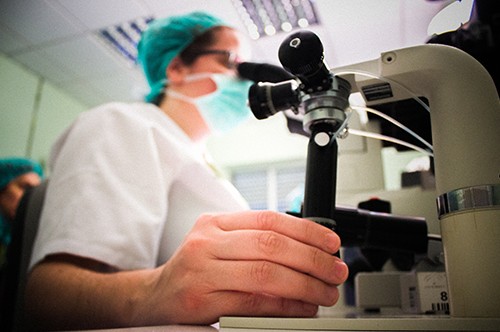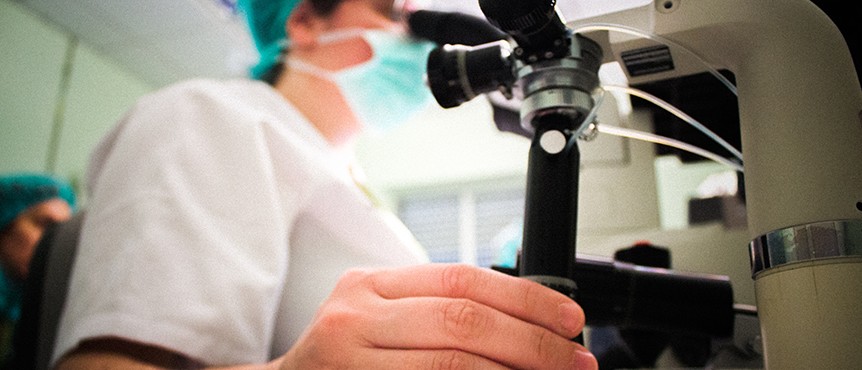In a time of uncertainty across the board, the United States is still "going boldly” ahead, bringing us innovation and constantly adapting its business model.


As with other sectors across the United States, the biopharmaceutical industry has entered 2017 amidst a great deal of speculation regarding prospective changes under the new Administration. Having come under fire for high drug pricing during Donald Trump’s first news conference as President-elect, many companies took a hit on stock prices in early 2017, and pharma giants such as Johnson & Johnson, Novartis, Merck, Eli Lilly, Amgen and Celgene have been further placed in the media spotlight following the subsequent press conference earlier this month.
As the world leader in the global market, with 2015 sales of $333 billion, triple those of nearest rival China, the U.S.’s industry outlook is very positive. With global health care expenditure projected to mount from $7 trillion in 2015 to $8.7 trillion by 2020, driven in part by increased life expectancy and improving treatments in therapeutic areas, the dynamics of the life sciences industry are shifting in the U.S. as they are elsewhere worldwide, particularly with its ageing population expected to increase 8% by 2020.
The U.S. is generally considered very attractive where innovation is concerned, particularly due to protective IP laws providing good incentives for R&D. Whilst corporate tax remains extremely high, this could be something potentially up for review under the new administration. The recently launched GoBoldly campaign seeks to showcase the industry’s cutting-edge research and advances, and goes some way to offsetting the recent somewhat negative portrayal in the media. Universities and research institutions continue to play an increasingly key role as larger companies outsource early-stage development, and the number of projects spun-out into commercial ventures is on the rise.
The Boston/Cambridge area ranked first in Genetic Engineering & Biotechnology News’ (GEN) top U.S. biopharma clusters list in 2016, followed by the San Francisco Bay area, having seen greatest progress in R&D through commercialization of academic research projects. Ranking third, the New Jersey/New York hub nevertheless maintains its reputation as the “medicine chest of the world”. Cross-industry collaboration is on the rise across the board, with associations and research institutions increasingly recognizing the benefits of pooling efforts and fostering an innovation ecosystem.
In New Jersey, for example, the merger of Rutgers University with the former University of Medicine and Dentistry of New Jersey (UMDNJ) has created a strong research institution, further complemented by Rowan University’s acquisition of the UMDNJ medical school in southern New Jersey. “These consolidations are starting to gain traction now, and we have seen increasing engagement and collaboration with the life sciences industry, providing better clinical approaches for patients as well as institutions around the state,” said Dean Paranicas, president and CEO at the Healthcare Institute of New Jersey (HINJ).
Citing New Jersey’s excellent infrastructure, favorable geographic location, skilled workforce and well-developed network of goods and service providers among other factors, Paranicas continued: “The key consideration for life sciences companies is the total value proposition we offer. […] For all these reasons, in addition to manufacturing, R&D and distribution, New Jersey is also home to many companies’ core functions. These companies also benefit from being proximate to each other–they collaborate and interact, which has advanced medical innovation globally while producing an experienced workforce locally from which to draw.”
Regional hubs continue to provide incentives to maintain an attractive environment, and companies are consolidating their presence through growing M&A activity. However, many companies still have very complex supply chains, and remain wary of the much-discussed drive to shift manufacturing back to the U.S., particularly in today’s globalized business environment. Equally, the impacts of a Border Adjustment Tax, whilst still very much speculative, are widely considered negative for the industry. “The infrastructure simply does not exist to make everything in the U.S.–it is a globalized supply chain, and extremely complicated,” asserted Gil Roth, president at the Pharma & Biopharma Outsourcing Association (PBOA).
Established in 2014, PBOA represents Contract Manufacturing Organizations (CMOs) and Contract Development and Manufacturing Organizations (CDMOs) and has recently worked to negotiate the five-year iteration of the Generic Drug User Fee Authorization (GDUFA).
Outsourcing trends have continued to see positive growth as companies increasingly seek to streamline internal expenditure, and CMOs continue to expand services to work on the development side. “Large pharmaceutical companies have grown better at outsourcing and now understand the advantages better. It has become a much more accepted business model and much more complementary to pharmaceutical supply chains,” Roth added.
The U.S. biopharmaceutical industry is likely entering a time of change, molded by the new Administration, but is well equipped to adapt and strengthen. Innovation is at the heart of the industry and R&D will continue to be its core area of focus and investment, sustaining the nation’s undisputed lead in the global market.

As with other sectors across the United States, the biopharmaceutical industry has entered 2017 amidst a great deal of speculation regarding prospective changes under the new Administration. Having come under fire for high drug pricing during Donald Trump’s first news conference as President-elect, many companies took a hit on stock prices in early 2017, and pharma giants such as Johnson & Johnson, Novartis, Merck, Eli Lilly, Amgen and Celgene have been further placed in the media spotlight following the subsequent press conference earlier this month.
As the world leader in the global market, with 2015 sales of $333 billion, triple those of nearest rival China, the U.S.’s industry outlook is very positive. With global health care expenditure projected to mount from $7 trillion in 2015 to $8.7 trillion by 2020, driven in part by increased life expectancy and improving treatments in therapeutic areas, the dynamics of the life sciences industry are shifting in the U.S. as they are elsewhere worldwide, particularly with its ageing population expected to increase 8% by 2020.
The U.S. is generally considered very attractive where innovation is concerned, particularly due to protective IP laws providing good incentives for R&D. Whilst corporate tax remains extremely high, this could be something potentially up for review under the new administration. The recently launched GoBoldly campaign seeks to showcase the industry’s cutting-edge research and advances, and goes some way to offsetting the recent somewhat negative portrayal in the media. Universities and research institutions continue to play an increasingly key role as larger companies outsource early-stage development, and the number of projects spun-out into commercial ventures is on the rise.
The Boston/Cambridge area ranked first in Genetic Engineering & Biotechnology News’ (GEN) top U.S. biopharma clusters list in 2016, followed by the San Francisco Bay area, having seen greatest progress in R&D through commercialization of academic research projects. Ranking third, the New Jersey/New York hub nevertheless maintains its reputation as the “medicine chest of the world”. Cross-industry collaboration is on the rise across the board, with associations and research institutions increasingly recognizing the benefits of pooling efforts and fostering an innovation ecosystem.
In New Jersey, for example, the merger of Rutgers University with the former University of Medicine and Dentistry of New Jersey (UMDNJ) has created a strong research institution, further complemented by Rowan University’s acquisition of the UMDNJ medical school in southern New Jersey. “These consolidations are starting to gain traction now, and we have seen increasing engagement and collaboration with the life sciences industry, providing better clinical approaches for patients as well as institutions around the state,” said Dean Paranicas, president and CEO at the Healthcare Institute of New Jersey (HINJ).
Citing New Jersey’s excellent infrastructure, favorable geographic location, skilled workforce and well-developed network of goods and service providers among other factors, Paranicas continued: “The key consideration for life sciences companies is the total value proposition we offer. […] For all these reasons, in addition to manufacturing, R&D and distribution, New Jersey is also home to many companies’ core functions. These companies also benefit from being proximate to each other–they collaborate and interact, which has advanced medical innovation globally while producing an experienced workforce locally from which to draw.”
Regional hubs continue to provide incentives to maintain an attractive environment, and companies are consolidating their presence through growing M&A activity. However, many companies still have very complex supply chains, and remain wary of the much-discussed drive to shift manufacturing back to the U.S., particularly in today’s globalized business environment. Equally, the impacts of a Border Adjustment Tax, whilst still very much speculative, are widely considered negative for the industry. “The infrastructure simply does not exist to make everything in the U.S.–it is a globalized supply chain, and extremely complicated,” asserted Gil Roth, president at the Pharma & Biopharma Outsourcing Association (PBOA).
Established in 2014, PBOA represents Contract Manufacturing Organizations (CMOs) and Contract Development and Manufacturing Organizations (CDMOs) and has recently worked to negotiate the five-year iteration of the Generic Drug User Fee Authorization (GDUFA).
Outsourcing trends have continued to see positive growth as companies increasingly seek to streamline internal expenditure, and CMOs continue to expand services to work on the development side. “Large pharmaceutical companies have grown better at outsourcing and now understand the advantages better. It has become a much more accepted business model and much more complementary to pharmaceutical supply chains,” Roth added.
The U.S. biopharmaceutical industry is likely entering a time of change, molded by the new Administration, but is well equipped to adapt and strengthen. Innovation is at the heart of the industry and R&D will continue to be its core area of focus and investment, sustaining the nation’s undisputed lead in the global market.